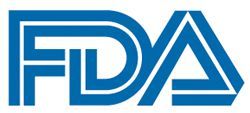FDA Requests Restriction of Second-line Maintenance Niraparib Indication in Ovarian Cancer
At the request of the FDA, GlaxoSmithKline plc will restrict the second-line maintenance indication for niraparib to only the population of patients with recurrent ovarian cancer whose tumors harbor deleterious or suspected deleterious germline BRCA mutations.

At the request of the FDA, GlaxoSmithKline (GSK) plc will restrict the second-line maintenance indication for niraparib (Zejula) to only the population of patients with recurrent ovarian cancer whose tumors harbor deleterious or suspected deleterious germline BRCA mutations.1
In March 2017, the regulatory agency approved the PARP inhibitor for use as maintenance treatment in adult patients with recurrent epithelial ovarian, fallopian tube, or primary peritoneal cancer who are in complete or partial response to platinum-based chemotherapy based on earlier data from the phase 3 ENGOT-OV16/NOVA trial (NCT01847274).2 At the time, niraparib was reported to have resulted in a 74% reduction in the risk of disease progression or death vs placebo in those with germline BRCA-positive, platinum-sensitive, recurrent disease (HR, 0.26; 95% CI, 0.17-0.41; P < .0001).
The decision to restrict the indication follows a regulatory review of data from the final overall survival (OS) analysis of the trial. In the non–germline BRCA-mutated cohort of the trial, the hazard ratio for OS was reported to be 1.06 (95% CI, 0.81-1.37).
“The US first-line indication of Zejula remains unchanged for the maintenance treatment of adult patients with advanced epithelial ovarian, fallopian tube, or primary peritoneal cancer who have a complete or partial response to platinum-based chemotherapy,” according to the press release issued by GSK.
The double-blind, placebo-controlled phase 3 trial enrolled a total of 553 patients with platinum-sensitive, recurrent epithelial ovarian, fallopian tube, or primary peritoneal cancer.3 Patients were assigned to 1 of 2 cohorts based on their BRCA status; those with deleterious or suspected deleterious germline BRCAmutations comprised 1 cohort (gBRCAmut cohort; n = 203) and those without germline BRCA mutations comprised the other cohort (non-gBRCAmut cohort; n = 350).
Study participants were randomly assigned 2:1 to receive oral niraparib at 300 mg daily (n = 138, gBRCAmut cohort; n = 234, non-gBRCAmut cohort) or matched placebo (n = 65, gBRCAmut cohort; n = 116, non-gBRCAmut cohort) within 8 weeks of their last therapy received. Patients received treatment until they experienced progressive disease or intolerable toxicity.
Randomization was stratified based on time to progression following the penultimate platinum therapy (6 to <12 months vs ≥12 months), use of bevacizumab (Avastin) in conjunction with the penultimate or last platinum regimen received (yes vs no), and best response achieved with the most recent platinum regimen received (complete response vs partial response).
Progression-free survival (PFS) by central independent assessment and RECIST v1.1 criteria served as the primary end point of the trial. OS served as a key secondary end point.
The median age of participants who received niraparib ranged from 57 years to 64 years; among those who received placebo, the median age ranged from 58 years to 67 years. Most patients (86%) enrolled to the trial were White.
Moreover, 67% and 69% of patients in the investigative and control arms, respectively, had a baseline ECOG performance status of 0. Moreover, 26% of those in the niraparib arm and 31% of those in the placebo arm previously received bevacizumab. Notably, 40% of patients enrolled to the trial received 3 or more prior lines of treatment.
In the gBRCAmut cohort, the median PFS with niraparib was 21.0 months (95% CI, 12.9–not reached) vs 5.5 months (95% CI, 3.8-7.2) with placebo. In the non-gBRCAmut cohort, the median PFS in the investigative and control arms was 9.3 months (95% CI, 7.2-11.2) and 3.9 months (95% CI, 3.7-5.5), respectively (HR, 0.45; 95% CI, 0.34-0.61; P < .0001).
The safety of niraparib monotherapy, given at a once daily dose of 300 mg, has been explored in 367 patients with platinum-sensitive, recurrent ovarian, fallopian tube, and primary peritoneal cancer enrolled to the NOVA trial.
The most common grade 3 or 4 adverse reactions experienced by 10% or more of patients who received the PARP inhibitor on the trial included thrombocytopenia (29%), anemia (25%), neutropenia (20%), leukopenia (5%), nausea (3%), constipation (0.8%), vomiting (2%), mucositis (0.5%), dry mouth (0.3%), fatigue or asthenia (8%), decreased appetite (0.3%), urinary tract infection (0.8%), aspartate or alanine aminotransferase elevation (4%), back pain (0.8%), headache (0.3%), insomnia (0.3%), anxiety (0.3%), dyspnea (1%), rash (0.5%), and hypertension (9%).
Sixty-nine percent of patients experienced toxicities that required dose reductions or interruptions, most commonly because of thrombocytopenia (41%) and anemia (20%). Fifteen percent of patients permanently discontinued treatment with niraparib.
GSK is in ongoing discussions with health authorities on a global scale regarding the data from the final OS analysis of NOVA, as well as other emerging survival data.
References
- GSK provides an update on Zejula (niraparib) US prescribing information. News release. GlaxoSmithKline plc. November 11, 2022. Accessed November 14, 2022. http://bit.ly/3Ev1hJS
- FDA approves maintenance treatment for recurrent epithelial ovarian, fallopian tube or primary peritoneal cancers. News release. FDA. March 27, 2017. Accessed November 14, 2022. http://bit.ly/3GfHSy0
- Zejula (niraparib). Prescribing information; GlaxoSmithKline; 2022. Accessed November 14, 2022. http://bit.ly/3EvryrD



